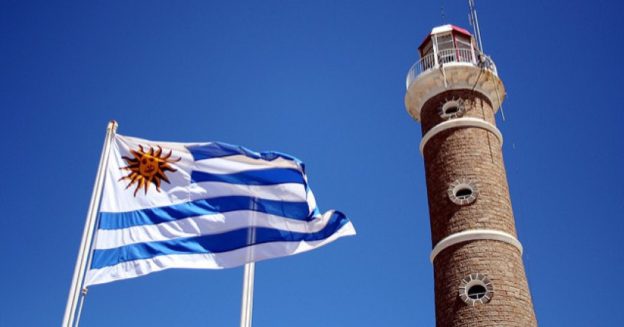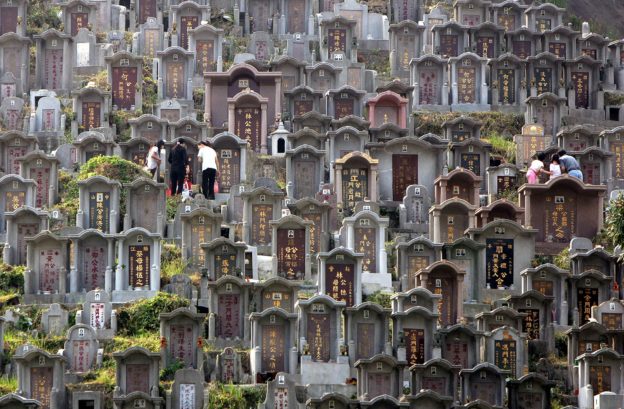A Look at Cemetery Customs, Challenges And Changes Around the World
February 26th, 2019
What happens when you bring together three funeral directors from very different cultures, across the world from each other?
You gain a lot of insight into the beauty, as well as the challenges, in each culture.
And, therefore, gain insight into the global trends happening in our wildly changing world of death and dying.
At the National Funeral Directors Association convention in Salt Lake City last year,
Willi Heuse from Germany, Teresa Saavedra from Bolivia and Wang Ji Sheng from China all came together to discuss the cemetery customs in their respective countries.
We gathered some of their wisdom on the influences, traditions and challenges each culture faces, so that we can begin to learn from and gain insight on our own profession and its changing face.
Here’s what we learned:
Germany: A land of diverse influences, and little tradition

Influences:
Germany is a fairly diverse country. It’s population represents many different beliefs and customs that stem from its rich history and geographical location in the center of the European continent. To the North, Nordic countries carry their own funeral and cemetery traditions that date back to the days of the Vikings. To the East, Eastern Europe’s Orthodox traditions dominate much of the funeral industry, and to the South and West, Western traditions set the standard for what can be described as German cemetery customs.

A typical traditional Viking burial, an influence of Northern Germany’s burial traditions. As you can see, funeral have come a long way in Germany!
Source
Customs & Rituals:
Funerals in Germany often symbolize reflection, transcendence and remembrance. A funeral director may help give meaning to these ceremonies by offering a way to personalize the ceremony. Many people choose to be buried with a meaningful object that symbolizes something in their life, which could be reminiscent of the Viking traditions mentioned above.
Challenges:
The idea of death is largely marginalized by the German people, and a lack of dominating religion means that there are no traditional cultural rituals for death or cemetery customs. The lack of affiliation with religion leads to market challenges in the funeral profession. Most people have no knowledge of funeral rites and often choose a direct cremation rather than a burial ceremony.
As well as in the USA, there is an increase in discounted funeral services has led to a decrease in profit margins for many funeral homes around Germany. Many online platforms offer discounted services—whether that be a burial and funeral ceremony or a cremation.
Uruguay: A monopolized industry of many influences
 Source
Source
Influences:
Because much of South America was colonized by European settlers, a lot of their traditions and cultural habits were embedded in South American culture as well. In Uruguay, for example, cemetery customs are much like what we would see in other countries around Europe and North America.
Customs & Rituals:

There are four holidays that surround the idea of death and cemetery customs in Uruguay. Uruguay has its own version of the Mexican holiday, Dia De Muertos, when people come together to honor their dead by decorating the grave sites of their loved ones. Other holidays include their own version of Veteran’s Day, Cemetery Day and even the World United for Life Event.
Cemetery customs in Uruguay say that all bodies must be buried in a cemetery. Sorry, no home burials if you’re in this country. One very important aspect of the funeral and cemetery culture in Uruguay is that all funeral workers must wear uniforms at all times. This is in part to pay respect to the dead. The grounds are also landscaped constantly to maintain a nice upkeep for so many people’s final resting place.
Because there is limited space as to where someone can be buried in Uruguay, it isn’t uncommon for people to choose cremation over burial. Around 70% of people who get cremated have their ashes scattered. It’s common for people to have their ashes scattered in places like parks, stadiums and the Atlantic ocean, which is just to the west of Uruguay.

Challenges:
In the Uruguay funeral industry, there are just a couple of family owned businesses, and those businesses have operated for generations. The Martinelli family, for example, is often called “the Coca Cola of funerals.” The family has owned their funeral home for four generations and has multiple locations around the country. They direct a majority of the funerals in the country and even own their own cemetery. This Monopoly can often stifle creativity and advancement in an industry, and this seems to be the case in Uruguay in some ways.
China: Merging ancient traditions with advanced technology
Influences:
As you could expect, much of Chinese cemetery customs surrounds the idea of merging old and new. Traditional landscaping is often paired with a modern touch that provides a refreshing, sleek atmosphere filled with tradition.
Customs & Rituals:

Worshippers clean the graves of their ancestors at a cemetery during Chung Yeung festival in Hong Kong October 22, 2004. During the festival, many people visit the graves of family members to perform cleansing rites and pay their respects.
Source: The Atlantic
Chinese ceremonies often feature themes of sacrifice when honoring the dead. The purpose of cemetery customs in China is to honor the dead. People cherish the life of their dead loved one through the use of color, rather than mourn their death as they do in many western countries. For this reason funeral ceremony colors are often bright. White is used as a backdrop or foundation while the presence of another color—usually a pastel purple, blue, pink, yellow or green, is a symbolic way of honoring a person’s life.
Cemeteries in China often feature colorful landscaping and a wide variety of plants and flowers to create a very natural touch. The Chinese have a particular fondness for nature, and integrate that into their cemetery customs through landscaping and a careful choice of location. This is, however, limited to the modern cemeteries. Traditional cemeteries are often seen by locals as very grim.
Challenges and Changes:
China is one of the most populated countries in the world, so real estate for the dead is harder to come by as there are millions of deaths (nearly ten million in 2017) every single year. This has resulted in local government bans on burial, causing a bit of controversy among China’s people.
On the brightside, China’s upswing in technological advancement in the last hundred years has had a direct contribution to the potential of the funeral industry as a good business opportunity. For example, some companies are using 3D printers to reconstruct the dead for viewing ceremonies, like the company shown in the video below:
Tying it together: 3 cultures, vastly changing
Although the traditions (and where they came from) are beautiful, things are changing in the global funeral landscape. From these three cultures, we can learn about the importance of creativity and respect as we step into the future.
One common theme that each director explained is that the fear of death is keeping people from talking about death, and this is a problem. Sound familiar? This invites us, as funeral professionals around the world, to start these conversations. Creatively. Embracingly. And courageously.
What do you think about the globally changing landscape of funerals? Tell us in the comments below!



[…] post A Look at Cemetery Customs, Challenges And Changes Around the World appeared first on funeralOne […]
[…] post A Look at Cemetery Customs, Challenges And Changes Around the World appeared first on funeralOne […]
Nice Blog!! The content you have shared is very elaborative and informative. Thanks a lot for sharing such a great piece of knowledge with us.
Thanks Jason!